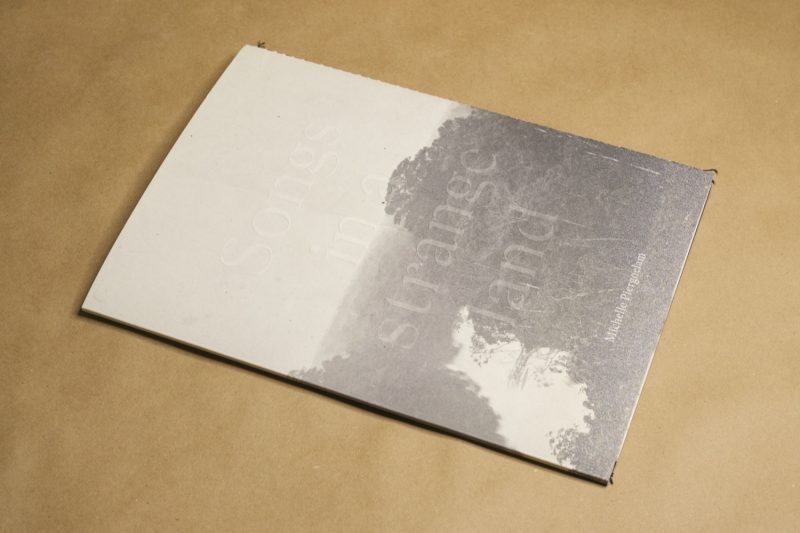The other day, I found a long list of tips around how to go about writing one’s novel. I have no intention of writing one. But I read a lot about writing simply because for some reason, essays produced around writing tend to be intelligent and useful. I love good writing, and I’m constantly trying to gleam some tricks.
Looking at other forms of art other than your own — I’m also a photographer — helps develop one’s own thinking: there is a shared universality behind art making. That universality will elude all those photographers and critics who only look at photography and who have no interest in anything else (my past teaching experience tells me that’s a majority of practitioners).
Of course, lists such as the one I mentioned above are hit or miss, and that’s partly the point. If you’re looking for the ten or 100 tips that will give you everything you need to do something, whether it’s taking photographs, writing a novel, or making the perfect sushi, then you’re really not getting it.
Nobody can teach you how you can do it. You have to grow into yourself as a creative person; other people can tell you what worked for them.
As is always the case when looking at non-photo material, some of the tips can be made to apply to photography more than others. Some are solid, others… not so much. That’s good. You want to engage in this kind of sorting, because that’s your first form of engagement. It’s a little bit like walking along a brook to collect stones to take home: you pick one up, look at it, and then you decide whether or not to take it or leave it.
As I was going through the list, at number 67 I was suddenly struck with some insight. “Is your fiction merely a series of photographs?,” it started, “in other words, do your sentences catalog static images?” This, I realized, is what differentiates truly good photography from merely competent one.
With a relatively minor modification, it becomes “Is your project merely a series of photographs? In other words, do your photographs catalog static images?”
You now might wonder how there might be any insight gained from these apparently meaningless phrases. Isn’t a photography project (or book) always a series of photographs? And aren’t photographs always only static images?
Well, yes and yes — if you insist on a very literal interpretation of what photography is and does. It is that very literal interpretation that has so much writing around photography never leave the ground, to endlessly circle around aspects of craft.
While all photographs are static — once taken, they are frozen — some photographs work differently than others. There essentially are two types of photographs. The first describes what it contains. The second does the same, at least in part, but it mostly points at something outside of the frame. The former photograph is static. The latter is dynamic.
Maybe the simplest example for static photography is provided by the Bechers’ work. Their photographs of water towers, gas tanks, and other industrial structures are completely static. The idea is for the viewer to look at a water tower (gas tank etc.) and take in its characteristics. Every decision that went into the making of those pictures was intended to have the photographs arrive at this destination. The light is always even, the objects are in the center of the frame, the geometry is resolved in such a fashion that no aberrant line might provide any distraction.
There was not supposed to be any potential in the work beyond the description. As a viewer, you were not supposed to be suddenly thinking about, say, the sadness of life, kittens, or whatever else. If anything, by hanging these photographs in grids, the Bechers wanted you to compare and contrast. That’s it. Not more, not less. The work is really well done, and a lot of people love it. I love the ambition and drive behind it, but I find the complete lack of emotions behind it tedious and off-putting.
It would be tempting to think that staged-narrative photography might provide the most obvious example of pictures that are dynamic by pointing at something outside of their frames. In a very basic sense, that’s correct. That said, though, most staged-narrative photography is simply too didactic, guiding viewers into exactly that one direction that the photographer could think about.
In the context of academic photography education (in particular so-called MFA programs), part of the problem originates from how photographs are being treated there. In my own experience, pictures are mostly discussed on their own. Putting them into relationships with each other is an afterthought, with especially the older faculty treating editing as merely an exercise in selecting the best examples (whatever “best” might even mean).
It is as if photographs were these magical entities that existed on their own. Obviously, they don’t. Almost everywhere photographs operate in relationship to something else, whether it’s text (as in news media), text and cityscapes (public advertising), or whatever else.
Crucially, the meaning of a photograph… Well, that’s an ugly and misguided idea to begin with. Photographs have no meaning. What we think of as meaning is created through a combination of the photograph and our reaction to it.
That meaning can change considerably when a photograph’s context changes or when a photograph is taken from one pairing and inserted into another (which only proves my point that there is no such thing as a fixed meaning).
If you’re trained to see photographs in relationships with each other, you’re much more likely to avoid the general problem I’m discussing here in the first place: instead of viewing them as pearls (you pick the shiniest ones), you see them as puzzle pieces that connect to other pieces (those other puzzle pieces do not necessarily only have to be photographs).
However, if you’re trained to see photographs as pearls, it’s very likely that you might be able to produce a shiny pearl necklace, in which each and every member is perfectly beautiful. But the total will not be more than the sum of its parts. That works for a lot of photography. However, it’s incredibly limiting. It throws out larger parts of the medium’s full potential.
Maybe it wasn’t such a good idea to establish photography as Art by copying other forms of Art that lack photography’s potential. I find it difficult to blame the likes of Alfred Stieglitz who, after all, lived at a time when photography was hardly explored. But to still stick to that model is inexcusable today, especially if you’re teaching students who pay a lot of money to get the much coveted certificate that tells the world they’re “masters”.
In the list of writing tips, number 3 explains why staged-narrative photography tends to fall so flat: “Your photographs should embarrass you at least a little bit. If they don’t, you haven’t photographed anything of substance.” (As you can tell, I adapted the original to photography.) Shiny pearls tend to not embarrass their makers.
I don’t necessarily mean that embarrassment is the only kind of feeling that gets at this particular point. There are other feelings that can serve equally well. Shame is one (albeit not one based on ethical violations of people in front of the camera).
Whatever it is that has you hesitant to share photographs with others because they reveal too much about you is a good indicator that your photographs might be sitting in their sweet zone: you’re outside of your safe zone. Now, you’re not only exposing something about the world (and possibly other people). Your own head is on the chopping block.
Don’t get me wrong. If illustrating some pre-defined concept is your thing, then hey, don’t let me stop you. Occasionally, I love looking at projects that are that and only that (assuming the photographs are any good).
However, as a viewer, in some fashion I prefer to feel implicated when I look at photography. I want to feel something when I look at photographs. I want to hear the bars of my own cage rattling, reminding me of an as-of-yet unfulfilled potential.
It’s very difficult to make other people feel something when as a photographer you don’t feel anything yourself while taking your pictures. Nobody will be able to feel your pain if you don’t feel it first.
And if you don’t have any pain, please don’t try to be an artist.
In the context of The Americans, Robert Frank wrote the following: “My photographs in this book are intended to be understood as a whole. But just as in other forms of art there has to be mystery (enigmas) and uncertainty somewhere! And it does not matter where in and in which photo people will (see it) recognize it.” (I copied the quote from this book, but I forgot to write down the page number.)
That’s getting at the gist of all of the above. If your project merely is a series of photographs, there is no mystery, no uncertainty. The pictures describe, but they do not point at anything outside of their frames. Typically, the description of the whole then is supposed to be some theme or idea that “explores” any number of abstract nouns that are lined up in a desperate attempt to dress up something that will not shine on its own.
Thus (number 97), “hone your sensibility. This is obvious, but it demands patience, discipline, and a high tolerance for risk.”
Don’t shy away from that risk.











